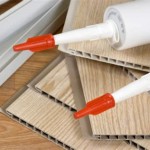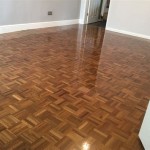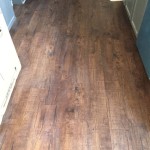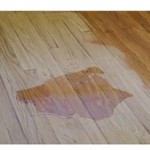Removing sheet vinyl flooring can be a daunting task. It requires a certain level of skill and knowledge to properly remove it without damaging the underlying floor. Fortunately, with the right tools and techniques, the job can be done quickly and easily. In this article, we’ll cover the basics of removing sheet vinyl flooring, discuss how to do it safely and effectively, and provide you with some tips to help make the job go more smoothly.
Tools and Materials
Before you begin, you’ll need to gather the necessary tools and materials for the job. These include a utility knife, a pair of safety goggles, protective gloves, a pry bar, a putty knife, and a hammer. Additionally, you may need a heat gun or a steamer, depending on the type of vinyl you have. It’s also a good idea to keep a shop vac handy to quickly clean up any debris.
Safety Precautions
Before you begin removing the vinyl, it’s important to take the proper safety precautions. Always wear protective eye and hand gear, and keep any sharp tools out of reach of children and pets. Make sure your work area is well-ventilated, and if you’re using a heat gun or steamer, be sure to open any nearby windows or doors to allow for proper ventilation.
Removing the Vinyl
Once you have all the necessary tools and materials, you can begin to remove the vinyl. Start by using a utility knife to cut around the edges of the sheet. Once you have cut the sheet, you can use a pry bar to carefully lift it off the floor. Be sure to use caution when lifting and removing the vinyl, as it can be sharp and can tear easily. If the vinyl is not coming off easily, you may need to use a heat gun or steamer to loosen the adhesive.
Underlying Floor Clean-Up
Once you have removed the vinyl, you’ll need to clean up the underlying floor. Start by using a putty knife to remove any remaining adhesive or debris. You can then use a shop vac to quickly and easily remove any remaining dust or debris. Depending on the type of flooring, you may also need to use a damp cloth to clean the area.
Repairing and Replacing Damaged Areas
If any areas of the underlying floor were damaged during the removal process, you’ll need to repair or replace them. Smaller chips or dents can usually be filled in with wood putty or spackle. If larger areas of the floor were damaged, you may need to replace the entire piece. If you’re replacing the flooring, be sure to use the same type of flooring as the original.
Conclusion
Removing sheet vinyl flooring can be a daunting task, but with the right tools and techniques, it can be done quickly and easily. Be sure to take the proper safety precautions, use the right tools, and clean up any debris afterwards. With a bit of patience and some elbow grease, you can successfully remove your vinyl flooring and have your floor looking like new in no time.
:max_bytes(150000):strip_icc()/contractor-removing-an-old-linoleum-flooring-1126931156-2ff1bb3706164eca9794d0bf49953d42.jpg)

/RemovingVinylFlooringwithaHeatGun-5b56475fc9e77c00371d7b7b.jpg)




Related Posts








